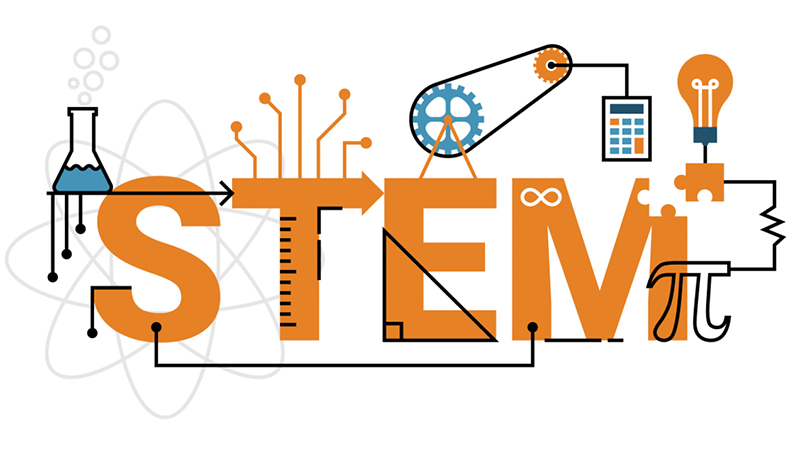The STEM Advantage: Driving Technological Innovation and Economic Growth

Strong 8k brings an ultra-HD IPTV experience to your living room and your pocket.
Investing in STEM education is essential for technological and economic progress, strengthening the workforce, and driving innovation. This article analyzes how countries such as India, China, South Korea, the United States, and Latin American nations leverage strategic investments in STEM to achieve technological leadership. It also highlights the role of governments in curricular modernization, teacher training, and expanding access to STEM education, preparing talent for the challenges of the artificial intelligence era.
1) Introduction and the Basis of Innovation
STEM (Science, Technology, Engineering, and Mathematics) education is crucial for technological and economic success. Countries that prioritize investment in STEM create skilled workforces, foster innovation, and attract high-tech industries. This article explores the correlation between STEM investment and technological leadership, analyzing case studies from India, China, South Korea, the US, and Latin America. It also highlights the need for a strong STEM foundation in the era of artificial intelligence (AI).
A strong foundation in STEM, from basic education to higher learning, ensures a workforce capable of driving technological advancements. Governments play a vital role through curriculum modernization, teacher training, infrastructure investment, and equitable access to STEM education. These efforts cultivate talent from early childhood education to university research and industry.
2) The Link Between STEM Investment and Economic Growth
Countries that consistently invest in STEM education benefit from:
A skilled workforce: Well-trained engineers, data scientists, and software developers drive innovation and attract foreign investment.
Higher GDP and job creation: Technology industries contribute significantly to national economies, generating higher employment rates and economic stability. For example, the STEM workforce in the U.S. is projected to grow by at least 2.5 million workers by 2026, reflecting the rapid expansion of the sector ( jec.senate.gov ).
Global competitiveness: Nations with strong STEM programs become leaders in industries such as AI, semiconductors, and software development, reducing their dependence on external technologies.
Governments drive progress by funding research, developing STEM policies, and fostering collaboration between universities and industries. Without these investments, countries risk losing global competitiveness.
3) Case Studies: Success Stories in STEM Investment
India: The IT Powerhouse
The growth of India's IT sector is driven by its focus on STEM, especially in engineering and computer science. Initiatives such as the Indian Institutes of Technology (IITs) and the Atal Innovation Mission have created a thriving technology ecosystem. The IT sector contributes significantly to GDP and employed over 4.47 million people in 2022 (NSDC India). Companies such as TCS, Cognizant, Infosys, and Wipro dominate the global outsourcing industry, generating well-paying jobs and economic growth.
China: A Leader in AI and Hardware Innovation
China's technological rise is linked to extensive investment in STEM. Prioritizing STEM in national exams and funding universities has produced a vast number of STEM graduates, driving advances in AI, robotics, and space technology . The "Made in China 2025" policy prioritizes high-tech industries, reducing dependence on foreign technology. China invests 2.4% of its GDP in R&D (World Bank), supporting tech giants such as Huawei, Alibaba, and Tencent .
4) The Importance of STEM Foundations in the Age of AI
AI tools are transforming industries by automating many intellectual tasks. However, a solid foundation in STEM remains crucial for countries seeking to excel in the technology sector. While AI can assist with programming and data analysis, professionals still require:
Solid knowledge of algorithms to develop and improve AI models.
Problem-solving skills to address complex engineering challenges.
Analytical capabilities to interpret AI-generated information and innovate beyond existing technologies.
Countries that neglect fundamental STEM education could become dependent on foreign technologies rather than leading their development.
5) Analysis, Conclusion and Future Implications
Comparing the STEM investment strategies of the aforementioned countries reveals common patterns: all prioritized STEM education at all levels, invested heavily in research and development, and fostered collaboration between academia and industry. Although each country faced unique challenges, their commitment to STEM has been a consistent factor in their technological success.
There is a strong correlation between government investment in STEM education and the growth of a thriving technology industry. Case studies show that countries that prioritize STEM development are more likely to achieve technological leadership, create well-paying jobs, and experience economic growth.
Platforms like Exospace, focused on honing these essential STEM skills in students, play a pivotal role in preparing the next generation of technology professionals. beecrowd is a proud sponsor of the “Digital Brazil 2030+” plan , which seeks to position Brazil as a global IT/technology hub by 2030, demonstrating the importance of collaborative efforts in advancing STEM education and technological development.
Increasing investment in STEM offers great potential for countries seeking to thrive in the global technological landscape. By prioritizing STEM education, fostering research, and promoting collaboration between universities and industries, nations can unlock their innovative potential and achieve sustainable economic growth.
Note: IndiBlogHub features both user-submitted and editorial content. We do not verify third-party contributions. Read our Disclaimer and Privacy Policyfor details.


